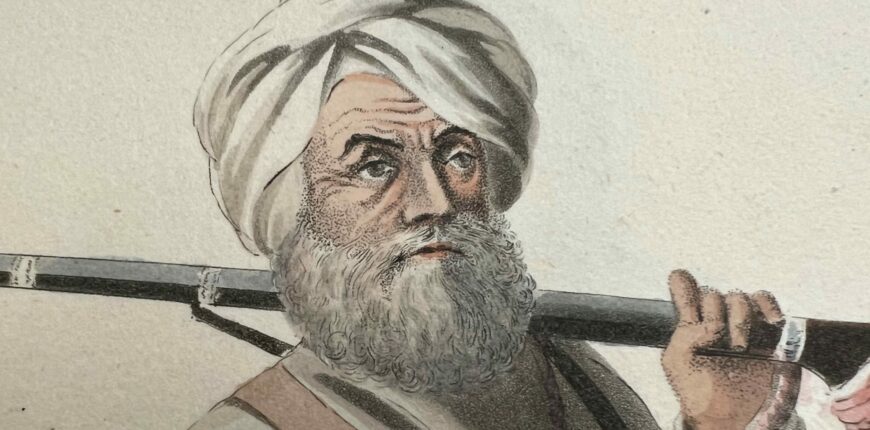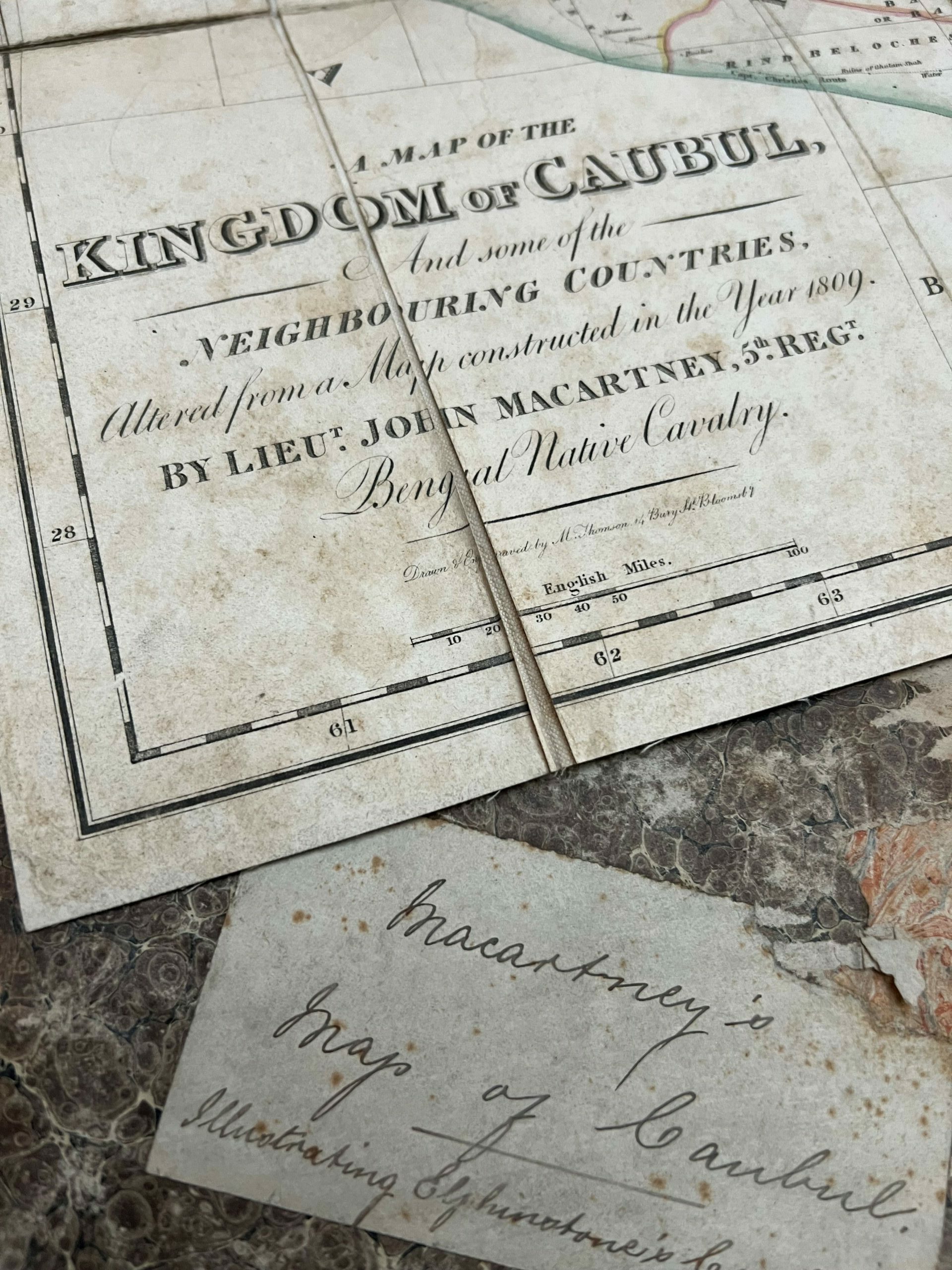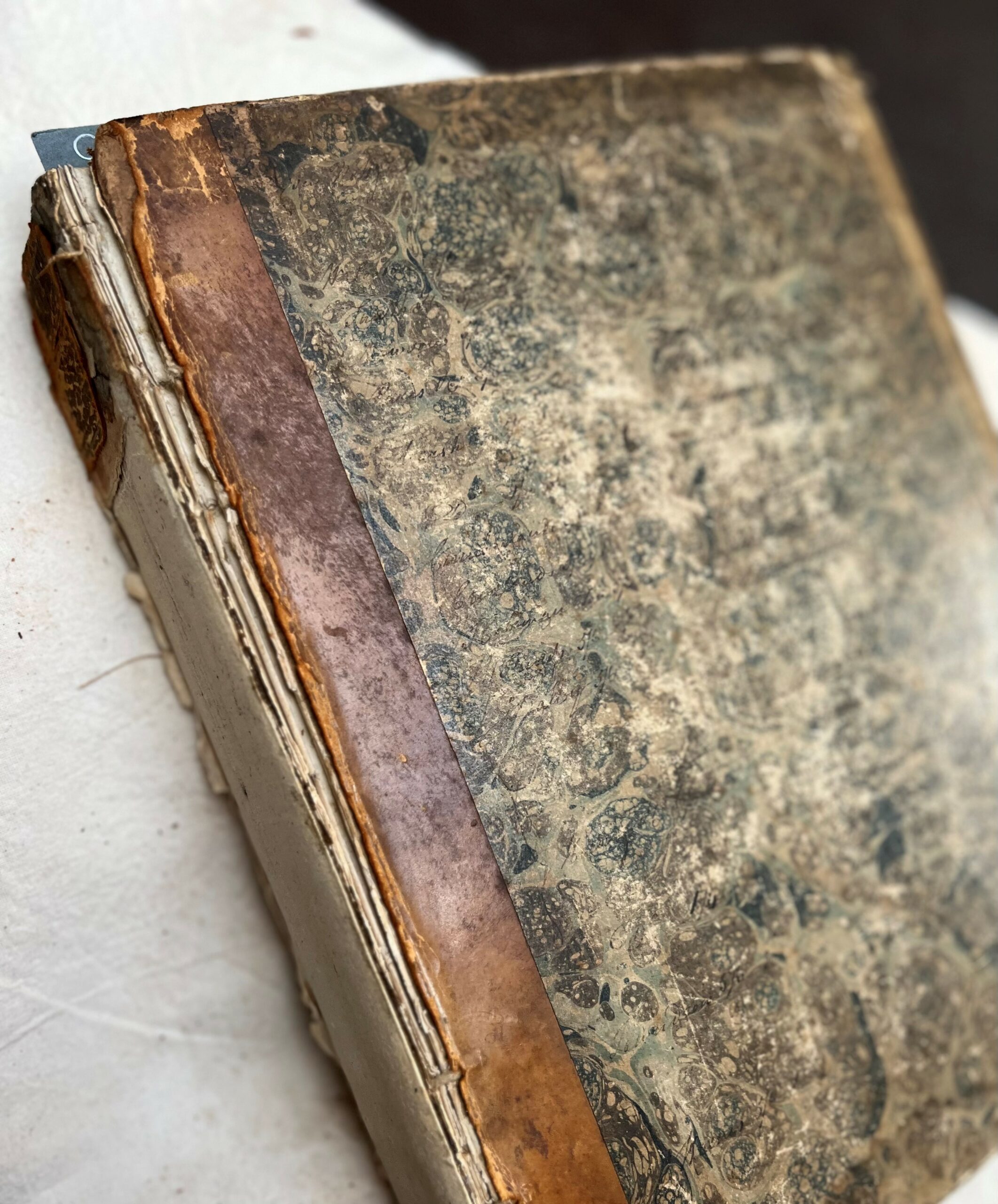Mountstuart Elphinstone’s Account of the kingdom of Caubul, and its dependencies in Persia, Tartary, and India (1815)
G. 19. 13-14

Mountstuart Elphinstone (1779-1859) was a Scottish statesman and historian associated with the government of British India. In 1808, Elphinstone was sent to negotiate a treaty with the Afghan ruler Shah Shuja Durrani (1785–1842), but never made it past the border town of Peshawar. Elphinstone nonetheless gathered a mass of information whilst he was there, which he presented in this work for a Western audience.
Elphinstone’s account contains thirteen aquatints of local costume by John Thomson, who also engraved the map which Elphinestone based largely on an earlier map produced by the cartographer, John Macartney. Charting the exact location of cities and the distance between them proved difficult – Macartney found the most reliable method of measuring distance was to calculate the walking speed of his camel:
having calculated the rate of marching through various kinds of country, I consider it a more correct mode, where the length of the coss is not known, than any other ; I have found camels march at the following rates, two miles and a half per hour for twelve and thirteen hours: over the sandy desarts they beat the elephants: we had one hour’s halt: in fifteen and sixteen miles, they march at the rate of two miles five furlongs per hour over sandy desarts; and when the road was hard and even, they have gone two miles seven furlongs, and for eight or ten miles, three miles per hour, loaded. From these observations 1 have calculated the march of caravans, allowing for halts and the nature of the country.


I’ve been rescued!
